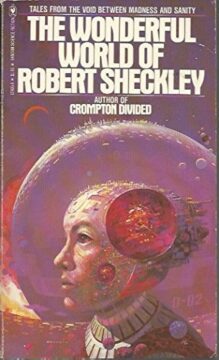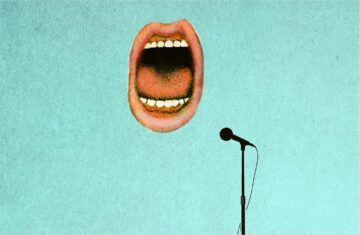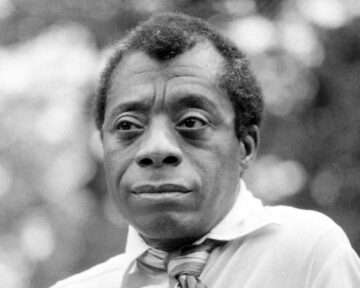Allison Futterman in Discovery:
 In the mid-1960s, a Scottish man named Angus Barbieri fasted for more than a year. For a total of 382 days, he survived on liquids, vitamins, and some yeast, ultimately losing 276 pounds. He undertook the fast (under medical supervision) to lose weight in his pursuit of better health. The practice of fasting for health benefits dates back to the fifth century B.C.E. when Hippocrates recommended fasting for certain illnesses. By the 1800s, fasting was being studied for its potential health effects.
In the mid-1960s, a Scottish man named Angus Barbieri fasted for more than a year. For a total of 382 days, he survived on liquids, vitamins, and some yeast, ultimately losing 276 pounds. He undertook the fast (under medical supervision) to lose weight in his pursuit of better health. The practice of fasting for health benefits dates back to the fifth century B.C.E. when Hippocrates recommended fasting for certain illnesses. By the 1800s, fasting was being studied for its potential health effects.
What Is Intermittent Fasting?
Intermittent fasting (IF) is the practice of restricting eating to certain times, also known as time-restricted eating. After a substantial time without eating, the body uses up its glycogen (sugar) stores and starts burning fat. This process is known as metabolism switching. This leads to increased ketone levels, which stimulates weight loss. In addition to weight loss, IF can positively influence other aspects of health.
More here.
Enjoying the content on 3QD? Help keep us going by donating now.

 On their surface, the stories in Store of the Worlds operate in new ways with an old conceit: The beings possessed of superior technology turn out to be less mature and developed in their social sensibilities and cultural commitments than their supposed inferiors on less technologically advanced planets. In Sheckley’s worlds, hyper-rationalists, religious imperialists, and wealthy suburbanites addicted to the latest gadget are given their comeuppance. But this highly typified first layer, when peeled back, reveals deeper meanings. Sheckley is interested in the human mind and its aversion to the kinds of sociality that demand conformity as a condition for the achievement of peace. His picture of the mind is psychoanalytic, though also inflected by his absurdist-influenced concerns with the human use and abuse of language and his pulpy inclinations to shock, scare, and amuse the reader.
On their surface, the stories in Store of the Worlds operate in new ways with an old conceit: The beings possessed of superior technology turn out to be less mature and developed in their social sensibilities and cultural commitments than their supposed inferiors on less technologically advanced planets. In Sheckley’s worlds, hyper-rationalists, religious imperialists, and wealthy suburbanites addicted to the latest gadget are given their comeuppance. But this highly typified first layer, when peeled back, reveals deeper meanings. Sheckley is interested in the human mind and its aversion to the kinds of sociality that demand conformity as a condition for the achievement of peace. His picture of the mind is psychoanalytic, though also inflected by his absurdist-influenced concerns with the human use and abuse of language and his pulpy inclinations to shock, scare, and amuse the reader. In 1667 John Rose, the royal gardener, took a knee at the foot of Charles II, the King of England, and
In 1667 John Rose, the royal gardener, took a knee at the foot of Charles II, the King of England, and  In 1896, the Swedish physicist Svante Arrhenius
In 1896, the Swedish physicist Svante Arrhenius  Populism, the rule of many, and authoritarianism, the rule of one, might seem like antipoles. But they are intimately related. Wherever populism appears, so do various forms of illiberalism that if allowed to run their course result in strongman politics with its contempt for dispersed power, checks and balances, freedom of the press, and other constraints on one-man (or woman) rule.
Populism, the rule of many, and authoritarianism, the rule of one, might seem like antipoles. But they are intimately related. Wherever populism appears, so do various forms of illiberalism that if allowed to run their course result in strongman politics with its contempt for dispersed power, checks and balances, freedom of the press, and other constraints on one-man (or woman) rule. It’s not just a scientific theory of consciousness that’s controversial; attempts to define “consciousness” are too. Language might not be necessary for consciousness, but you can’t study consciousness without using words. Some theorists define “consciousness” as “awareness,” “sentience” or “experience,” but that merely shifts the point of confusion; those terms are as much in need of clarification as “consciousness” is.
It’s not just a scientific theory of consciousness that’s controversial; attempts to define “consciousness” are too. Language might not be necessary for consciousness, but you can’t study consciousness without using words. Some theorists define “consciousness” as “awareness,” “sentience” or “experience,” but that merely shifts the point of confusion; those terms are as much in need of clarification as “consciousness” is. The reaction of the Smiths and millions of other working-class families to their new suburban environments rarely surfaced at the time. John’s quotes above were recorded almost
The reaction of the Smiths and millions of other working-class families to their new suburban environments rarely surfaced at the time. John’s quotes above were recorded almost  Science—meaning the Western tradition of testing hypotheses and writing research papers—has its roots in the Enlightenment of 17th and 18th century Europe. When this new way to understand the natural world emerged, colonialism was already well established, with a handful of nations in Western Europe exerting political and economic control over distant lands and peoples. Eventually, just eight nations claimed more than half the globe (see
Science—meaning the Western tradition of testing hypotheses and writing research papers—has its roots in the Enlightenment of 17th and 18th century Europe. When this new way to understand the natural world emerged, colonialism was already well established, with a handful of nations in Western Europe exerting political and economic control over distant lands and peoples. Eventually, just eight nations claimed more than half the globe (see  According to Alexandre Lefebvre, professor of politics and philosophy at the University of Sydney and author of the new book Liberalism as a Way of Life, the allegory that best captures the liberal self-conception was given to us by the late David Foster Wallace, during his commencement speech at Kenyon College. I suspect you know it, but if not, here’s the truncated version: two younger fish are swimming by an older one. When the older fish politely asks, “How’s the water?”, one of the younger fish looks at the other and says, “What the hell is water?” Lefebvre would say the water is liberalism; I’m one of the younger fish.
According to Alexandre Lefebvre, professor of politics and philosophy at the University of Sydney and author of the new book Liberalism as a Way of Life, the allegory that best captures the liberal self-conception was given to us by the late David Foster Wallace, during his commencement speech at Kenyon College. I suspect you know it, but if not, here’s the truncated version: two younger fish are swimming by an older one. When the older fish politely asks, “How’s the water?”, one of the younger fish looks at the other and says, “What the hell is water?” Lefebvre would say the water is liberalism; I’m one of the younger fish. Baldwin’s imagination remained passionately connected to the destiny of his country. He lacked the guile and watchfulness that might have tempted him to keep clear of what was happening in America; the ruthlessness he had displayed in going to live in Paris and publishing Giovanni’s Room was no use to him later as the battle for civil rights grew more fraught. It was inevitable that someone with Baldwin’s curiosity and moral seriousness would want to become involved, and inevitable that someone with his sensitivity and temperament would find what was happening all-absorbing.
Baldwin’s imagination remained passionately connected to the destiny of his country. He lacked the guile and watchfulness that might have tempted him to keep clear of what was happening in America; the ruthlessness he had displayed in going to live in Paris and publishing Giovanni’s Room was no use to him later as the battle for civil rights grew more fraught. It was inevitable that someone with Baldwin’s curiosity and moral seriousness would want to become involved, and inevitable that someone with his sensitivity and temperament would find what was happening all-absorbing. Fine, the title is an exaggeration. But only a small one. GLP-1 receptor agonist medications like Ozempic are already FDA-approved to treat diabetes and obesity. But an increasing body of research finds they’re also effective against
Fine, the title is an exaggeration. But only a small one. GLP-1 receptor agonist medications like Ozempic are already FDA-approved to treat diabetes and obesity. But an increasing body of research finds they’re also effective against  John Rawls, the preeminent political philosopher of the
John Rawls, the preeminent political philosopher of the  W
W